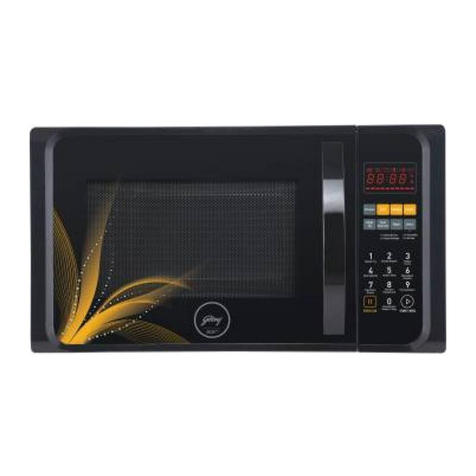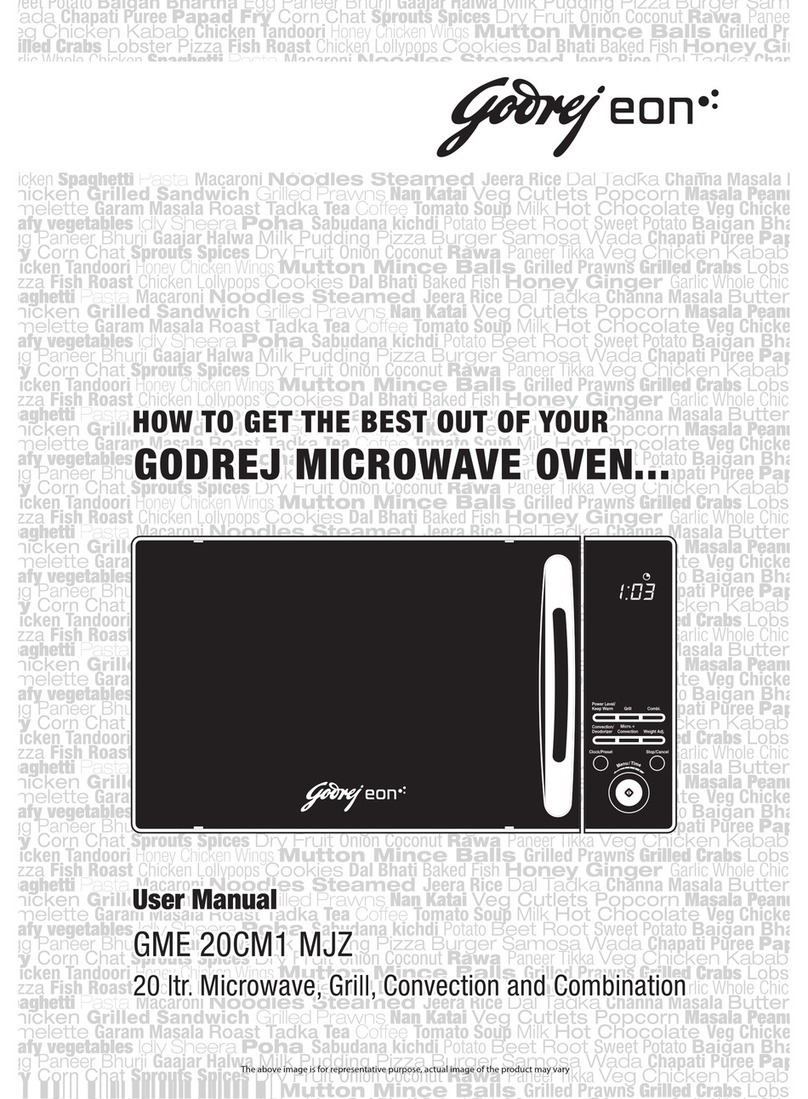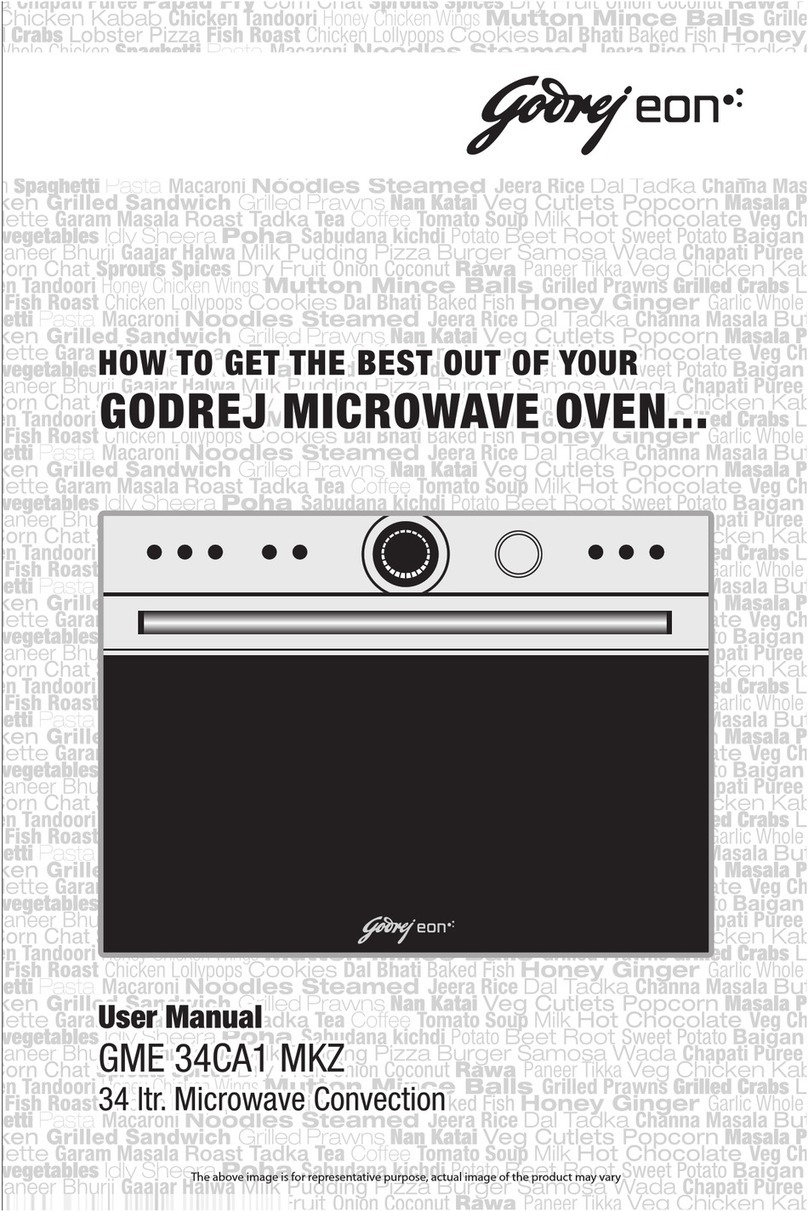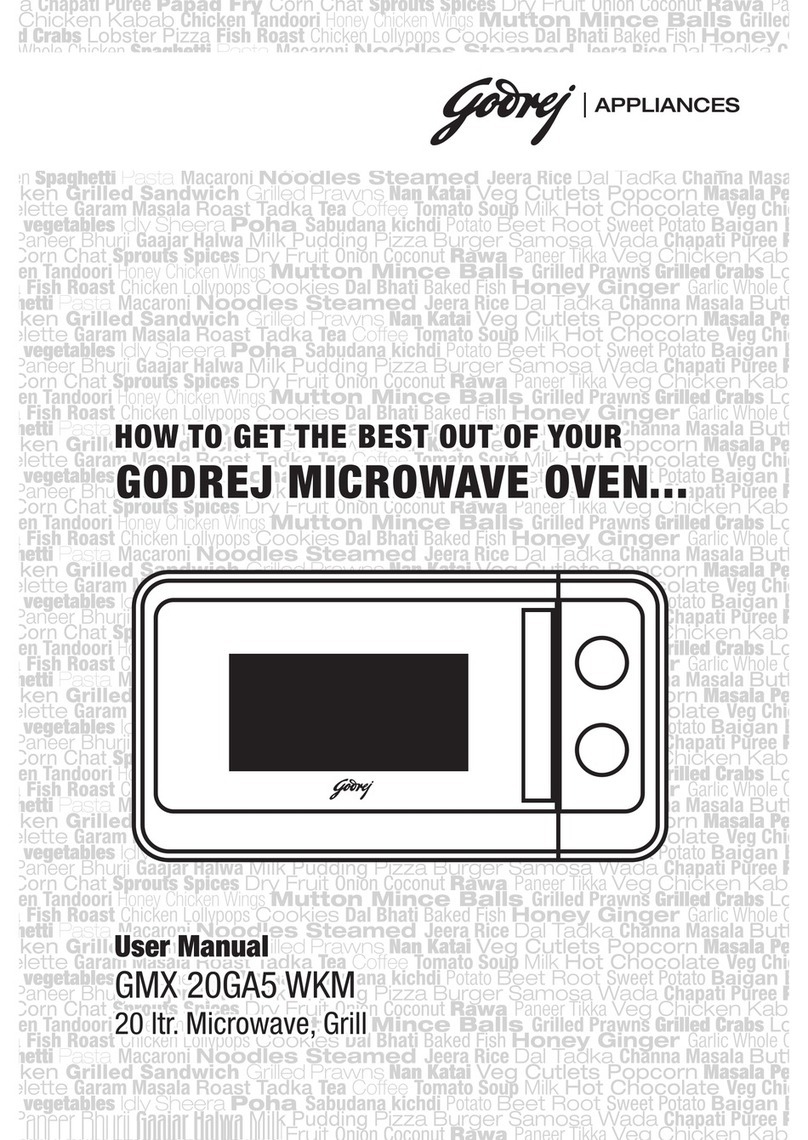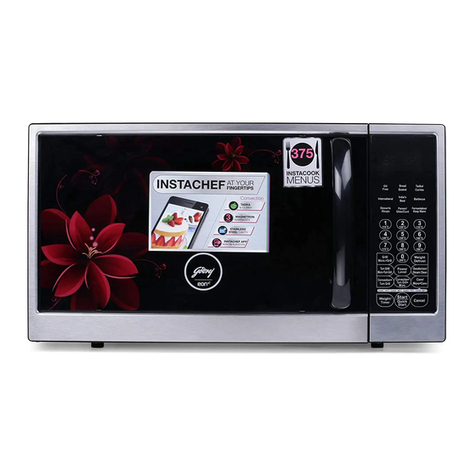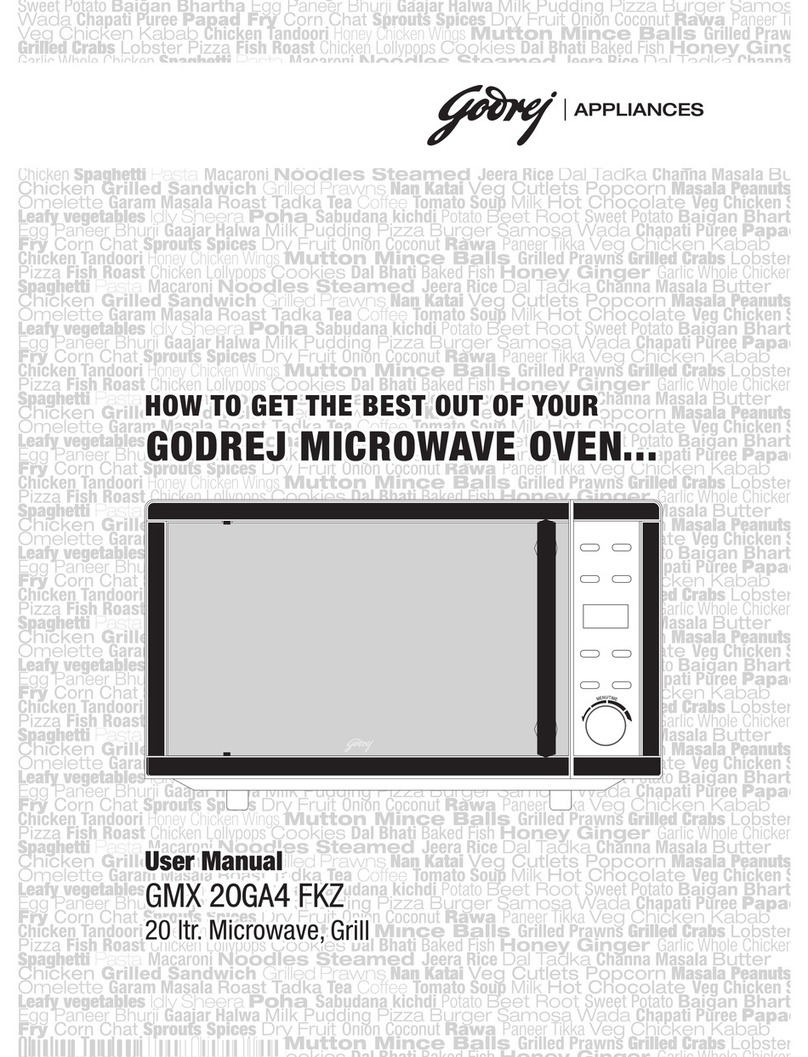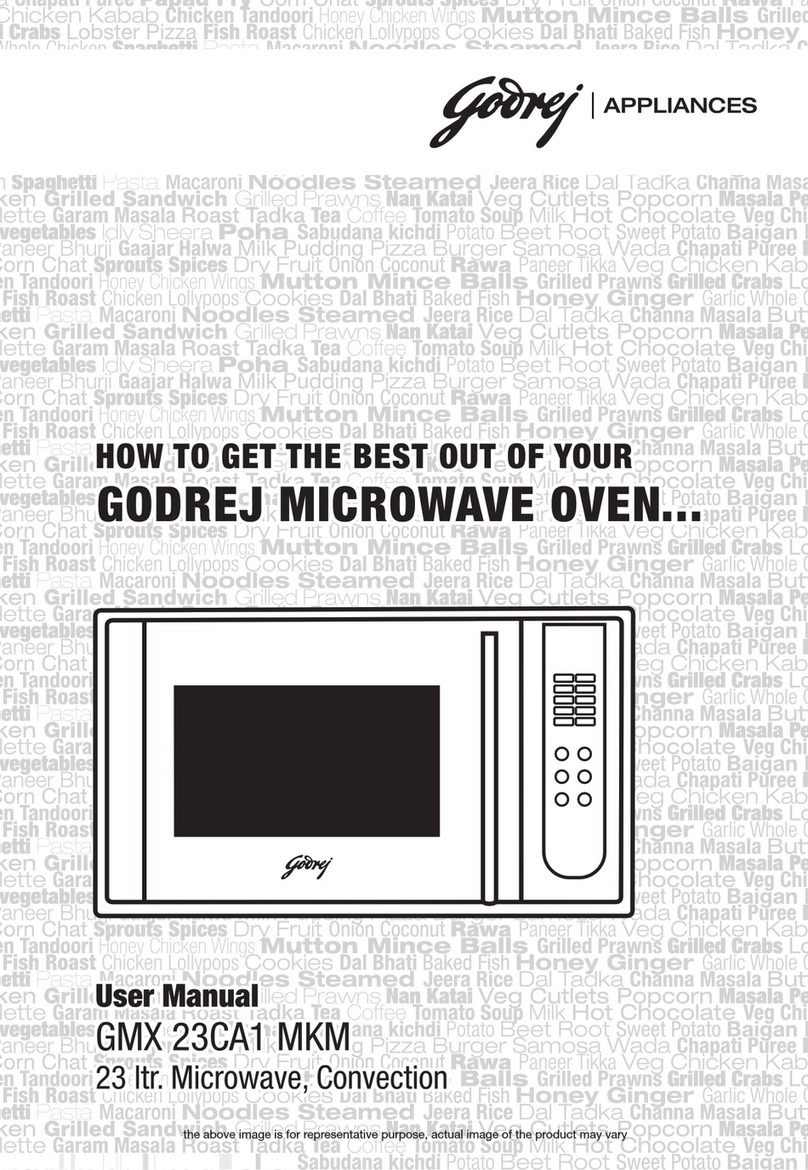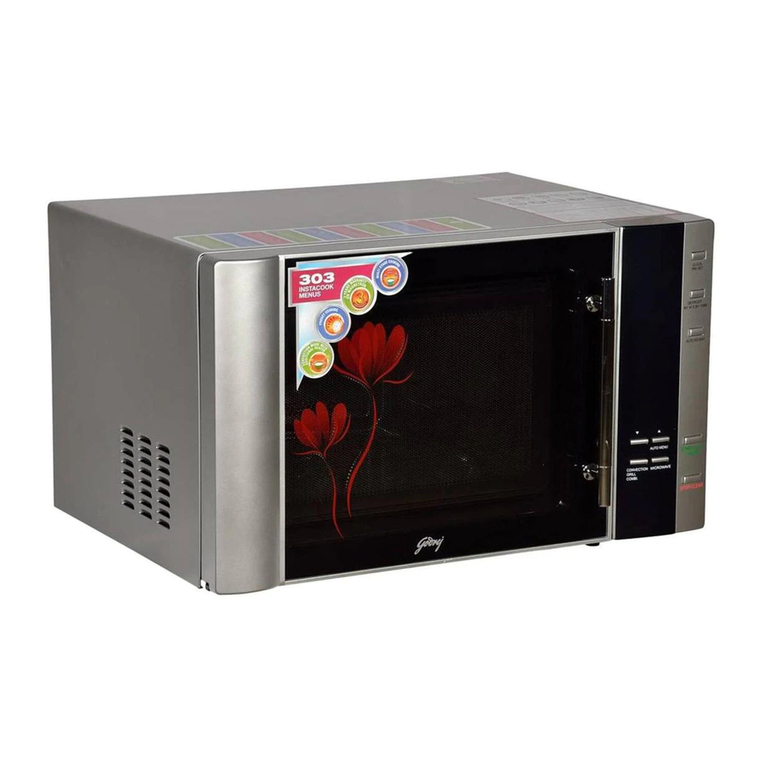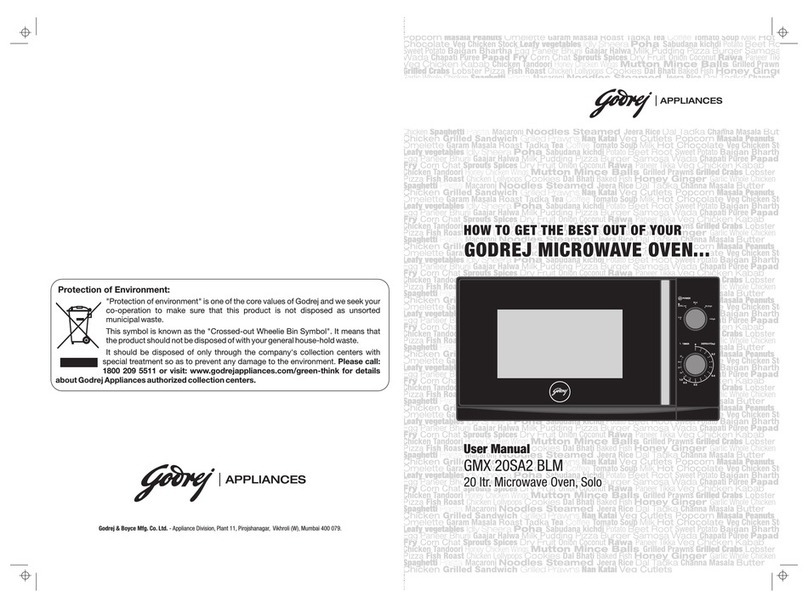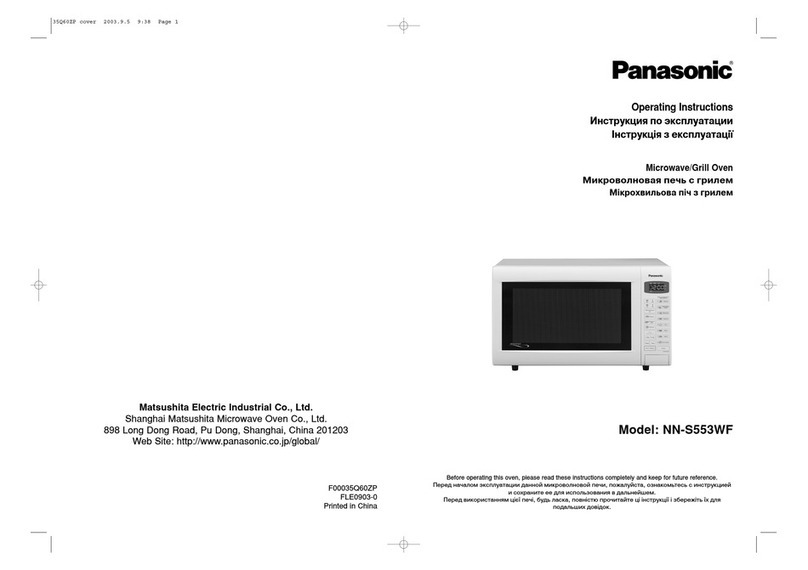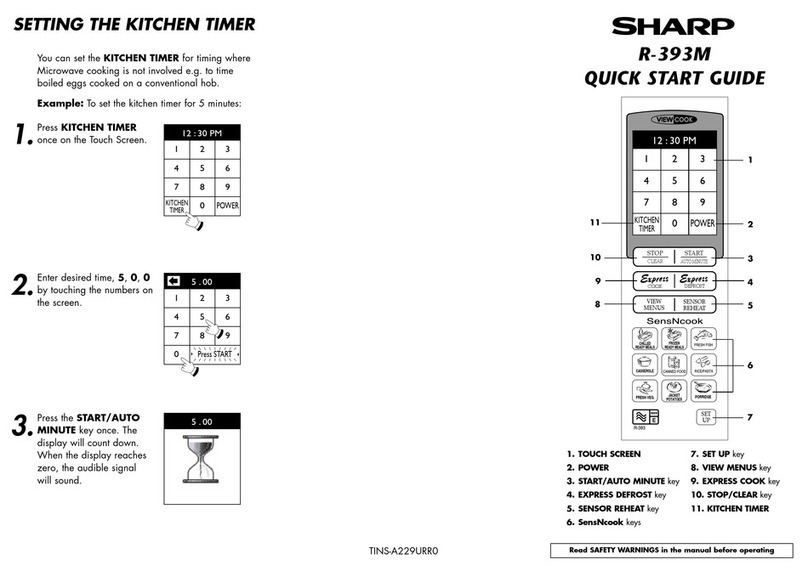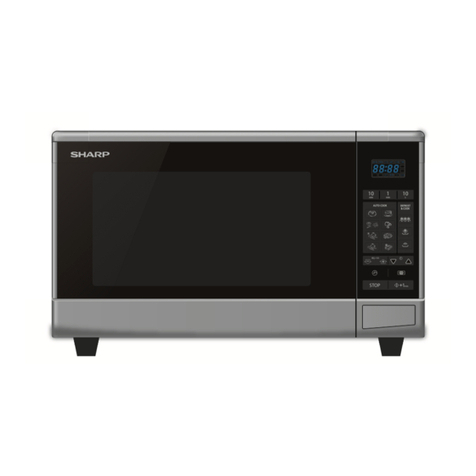
5
1) Select a level surface that provides enough
open space for the intake and/or outlet vents
A minimum clearance of 7.5 cm is required
between the oven and any adjacent walls. One
side must be open.
a) Leave a minimum clearance of 3 cm above
the oven.
b) Do not remove the legs from the bottom of
the oven.
c) Blocking the intake and/or outlet openings
can damage the oven
d) Place the oven as far away from radios and
TV as possible
2) Plug your oven into a standard household
outlet. Be sure the voltage and frequency is
the same as the voltage and the frequency on
the rating label at the back of the Microwave
Oven.
3) Do not operate the oven without glass tray,
roller support and shaft in their proper
positions (applicable for microwave ovens with
turn tables)
WAR I G: Do not install oven over a range
cooktop or other heat-producing appliance. If
installed near or over a heat source, the oven
could be damaged and the warranty would be
void.
I
S
ST
TA
AL
LL
LA
AT
TI
IO
O
I
I
F
FO
OR
RM
MA
AT
TI
IO
O
The list below is a general guide to help you select the correct utensils.
Cookware Microwave Grill Convection Combination*
Heat–Resistant Glass Yes Yes Yes Yes
Non Heat–Resistant Glass No No No No
Heat–Resistant Ceramics Yes Yes Yes Yes
Microwave–Safe Plastic Dish Yes No No No
Kitchen Paper Yes No No No
Metal Tray No Yes Yes No
Metal Rack No Yes Yes No
Aluminum Foil & Foil
Container No Yes Yes No
* Combination: applicable for both "microwave+grill", and "microwave+convection" cooking.
U
UT
TE
E
S
SI
IL
L G
GU
UI
ID
DE
E
1. The ideal material for a microwave utensil is
transparent to microwave, it allows energy
to pass through the container and heat the
food.
2. Microwave cannot penetrate metal, so metal
utensils or dishes with metallic trim should
not be used.
3. Do not use recycled paper products when
microwave cooking, as they may contain
small metal fragments which may cause
sparks and/or fires.
4. Round /oval dishes rather than
square/oblong ones are recommend, as
food in corners tends to overcook.
5. Narrow strips of aluminum foil may be used
to prevent overcooking of exposed areas.
But be careful don’t use too much and keep
a distance of 1 inch (2.54cm) between foil
and cavity.


